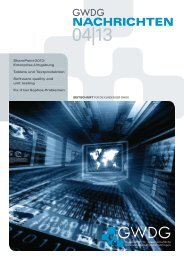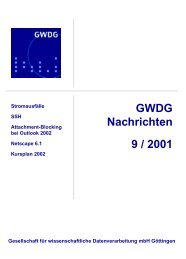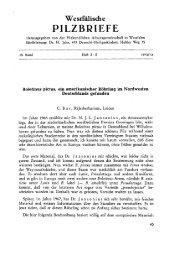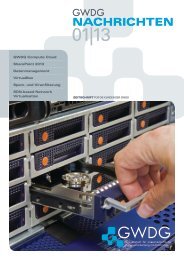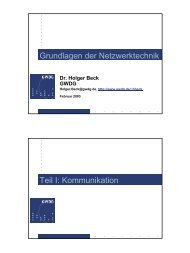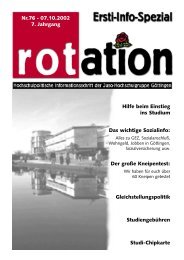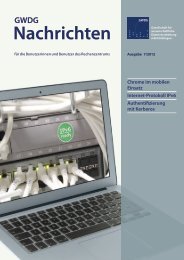Forschung und wissenschaftliches Rechnen - Beiträge zum - GWDG
Forschung und wissenschaftliches Rechnen - Beiträge zum - GWDG
Forschung und wissenschaftliches Rechnen - Beiträge zum - GWDG
Erfolgreiche ePaper selbst erstellen
Machen Sie aus Ihren PDF Publikationen ein blätterbares Flipbook mit unserer einzigartigen Google optimierten e-Paper Software.
submodel and the base model is standardized.<br />
– Soft-coding: The model code does not contain “hard-coded” specifications<br />
which require a change of the code and recompilation after the model domain<br />
or the temporal or spatial resolution is changed. A prominent example<br />
is to use height or pressure for parameterizations of vertical profiles,<br />
instead of level indices, as the latter have to be changed if the vertical resolution<br />
of the base model is altered.<br />
– Portability: All submodels are coded according to the language standard<br />
of Fortran95 (ISO/IEC-1539-1). The code is free of hardware or vendorspecific<br />
language extensions. In the rare cases where hardware specific<br />
code is unavoidable (e.g. to circumvent compiler deficiencies), it is encapsulated<br />
in preprocessor directives. MESSy allows for a flexible handling<br />
on both, vector- and scalar- architectures. Compiler capabilities like automatic<br />
vectorization (vector blocking) and inlining can be applied straightforwardly.<br />
Last but not least, for an optimization, vector and scalar code<br />
of the same process can coexist and switched on/off depending on the architecture<br />
actually used.<br />
– Multi-developer: The model system can be further developed by more than<br />
one person at the same time without interference (see Fig. 2).<br />
To meet the objectives described above, we have developed the Modular Earth<br />
Submodel System (MESSy). It consists of:<br />
1. a generalized interface structure for coupling processes coded as socalled<br />
submodels to a so-called base model<br />
2. an extendable set of processes coded as submodels<br />
3. a coding standard<br />
3 MESSy Interface Structure<br />
The MESSy interface connects the submodels to the base model via a standard<br />
interface. As a result, the complete model setup is organized in four<br />
layers, as shown in Fig. 3:<br />
1. The Base Model Layer (BML): At the final development state, this layer<br />
comprises only a central time integration management and a run control<br />
facility for the processes involved. In the transition state (at present) the<br />
BML is the domain specific model with all modularized parts removed.<br />
For instance, in case of an atmospheric model it can be a GCM.<br />
2. The Base Model Interface Layer (BMIL), which comprises basically three<br />
functionalities:<br />
– The central submodel management interface allows the base model to<br />
control (i.e. to switch and call) the submodels.<br />
15




